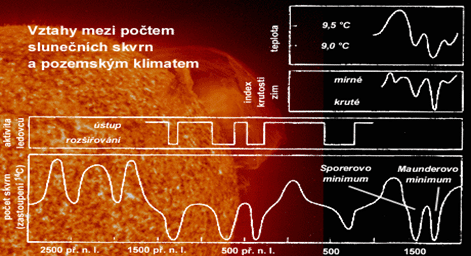Solar physics and safety

Solar physics, or the physics of the Sun, focuses on the study and description of stars, including their structure and behavior. It directly influences security fields, as demonstrated by the examples provided at the end of this article. The following information has been sourced from the following references:
If you are interested in more articles on physics and security, follow our section Physics and Security – KINT S.r.o.
Solar physics can be divided into the following areas:
– general description of the Sun as a star,
– internal structure of the Sun,
– convection,
– atmosphere,
– rotation,
– oscillations,
– helioseismology,
– solar magnetism,
– eruptions,
– corona,
– space weather.
From the perspective of physics for security fields, we will focus primarily on space weather as a consequence of the properties described in other branches of solar physics, as it has a direct impact on human systems and technology.
Space weather
Space weather significantly impacts human technologies and Earth’s climate, making the field of space weather measurement and forecasting a highly promising discipline within applied solar physics. Fluctuations in space weather cause, among other things: geomagnetic storms, auroras, ionospheric disturbances, electronic malfunctions, and disruptions in long-distance power lines 3.
MICHAL, Švanda. Solar Physics. MICHAL, Švanda. Faculty of Mathematics and Physics, Charles University [online]. Prague: Sirrah, UK, 2015 [cited 2017-09-04]. Available from: http://sirrah.troja.mff.cuni.cz/~svanda/AST001/.
The primary monitored variables of space weather are:
– Monitoring of IMF (interplanetary magnetic field) around Earth in nT,
– Disturbance currents in the ionosphere (Dst) caused by increased solar activity in nT to determine the intensity of a magnetic storm at low latitudes,
– Other geomagnetic indices – K, Kp, Ap, AE 4,
ŠALOMOUNOVÁ, Markéna. Space Weather – Ionospheric Variations Due to Solar Processes. Brno, 2011. Bachelor’s thesis. Masaryk University, Faculty of Science, Institute of Theoretical Physics and Astrophysics. Supervisor: Mgr. Zbyšek Mošna.
– Solar wind speed in km/s,
– Solar activity proxies (14C):
– 14C, Be isotopes: cosmogenic elements,
– Likely of galactic origin; during increased solar activity, they lose energy and their penetration into Earth’s magnetosphere decreases,
– Higher activity = less 14C,
– Isotopes can be found in glaciers and tree rings,
– Geological layers mapping general climate temperature.
Activity Prediction Methods:
– Activity forecasts:
– Short-term – extrapolation based on experience, “observation” of the far side
– Accuracy ~ 85% over a week,
– Long-term
– Mathematical function modeling the activity index evolution
– Prediction = extrapolation,
– Physical model incorporating principles, calibrated on observations,
– Prediction = model projection into the future,
– Solar activity affects technology – for planning purposes, at least an estimate is necessary
– NASA and mission planning, extravehicular activities,
– Energy – vigilance against outages,
– Satellites – potential malfunctions, transition into safe mode.
Selected solar phenomena and anomalies
Flare Event Scenario:
1. High-energy electromagnetic radiation
– X-rays and gamma rays,
– Ionizes the atmosphere, causing communication and GPS disruptions,
– Lasts eight and a half minutes after the flare.
2. Proton storm
– Dangerous for astronauts, increases radiation exposure for pilots, etc.,
– Differential charging of particles,
– Lasts 23 minutes to two hours.
3. Coronal mass ejection
– Disrupts the magnetosphere,
– Satellite failures, network outages,
– 20 hours to three days.
Aurora is the result of the interaction between solar wind particles and atoms and molecules in the atmosphere (collisional excitation); high power input, up to 600 GW; most commonly occurs near the polar circles; appears almost symmetrically in the southern and northern hemispheres; completely harmless – disrupts shortwave communication but enables longwave communication.
Impacts of solar activity on Earth
Effects of Solar Activity on Earth:
– Generation of voltage on long-distance power lines:
– Collapse of energy grids,
– Corrosion of pipelines.
– Radio communication interference:
– Air traffic!
– Navigation:
– Oil platforms,
– Radio beacons.
– False signals.
– Electronics.
– Damage to spacecraft.
– Increased radiation risk for astronauts, pilots, and flight attendants.
– Potential danger to cybernetic implants.
– People more sensitive to changes in the magnetic field:
– Possible impact on MRI (Magnetic Resonance Imaging).
– Loss of animal orientation: pigeons, dolphins, whales, etc.
Periods of activity and relation to climate
Gleissberg Cycle: 87 years, modulation of cycle amplitude.
De Vries Cycle: 205 years.
Hallstatt Cycle: 2300 years.
Eruptive period: 140–170 (154) days.
Strong period ~ 27 days! + aperiodic component
Periods have no physical basis, they do not reproduce in models 5.
MICHAL, Švanda. Solar Physics. MICHAL, Švanda. Faculty of Mathematics and Physics, Charles University [online]. Prague: Sirrah, UK, 2015. Available at: http://sirrah.troja.mff.cuni.cz/~svanda/AST001/
The Relationship Between Solar Activity and Earth’s Climate according to 6
MICHAL, Švanda. Solar Physics. MICHAL, Švanda. Faculty of Mathematics and Physics, Charles University [online]. Prague: Sirrah, UK, 2015. Available at: htt:
10th–13th centuries: warm climate, Greenland – agricultural colony (Greenland)
13th century: cooling
645–1715: Little Ice Age (Maunder Minimum)
Selected disasters
The chapter briefly introduces selected disasters caused by solar activity and sudden changes in the magnetic field, according to [20].
The Carrington Event (super-eruption)
– First historically documented eruption on September 1, 1859,
– Geomagnetic storm lasting two days,
– Aurora visible in the Caribbean, miners in the Rocky Mountains had breakfast thinking it was morning, it was possible to read newspapers,
– Telegraph outages, operators burned, some lines sent false messages even without power,
– Dst index −1760 nT.
1921 Electromagnetic Storm
– Geomagnetic storm disabled the New York City subway on May 13, 1921
– Probably caused the telegraph line to burn down a control tower,
– Complete telegraph network outage on the east coast of the USA,
– Widespread failures (“burnt electronics”) of the telephone network in Sweden,
– Failures of transcontinental cables.
Québec Blackout
– March 13, 1989, widespread geomagnetic storm as a result of a series of eruptions and CMEs (coronal mass ejections),
– Collapse of the energy grid in Québec, total blackout lasted 9 hours,
– Isolated by the rocky bedrock,
– Collapse lasted on the order of seconds,
– Several transformers burned out,
– Total damages $6 million,
– A 500 kV transformer in New Jersey burned out,
– Two 400 kV transformers burned out in the United Kingdom.
Bastille Day Event
– X5-class eruption on July 14, 2000,
– Proton eruption on the center of the solar disk, thus well-observed,
– Completely overwhelmed the EIT@SOHO and rendered measurements useless,
– Accompanied by a geomagnetic storm from July 15–17,
– After-effects of the coronal mass ejection detected by instruments on Voyager 1 and Voyager 2.
July 23, 2011, Eruption on the Far Side of the Sun
– Massive CME (strength unknown), hit the STEREO A satellite
– Actually two CMEs 15 minutes apart, the area “cleaned” by another CME four days prior,
– 2900 km/s (!),
– Estimated geo-effectiveness – DST ~ -1200 nT,
– Estimated damage: $2 trillion (20x Katrina).

